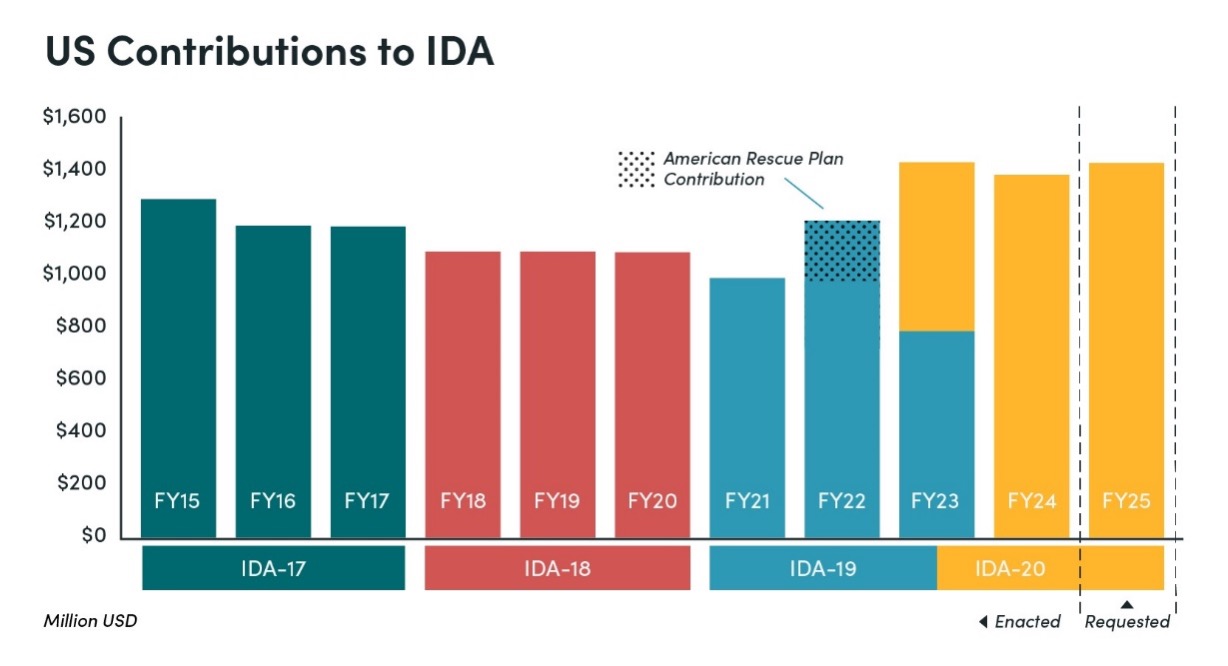President Obama's total FY2014 international affairs budget request--$52 billion--looks a lot like what was left for international affairs in FY2013 after sequestration. But the administration uses a scalpel, not an ax, to get there in FY2014. The FY2014 budget, if approved, shifts significant resources away from Iraq, Afghanistan, Pakistan and concentrates spending on food security, global health and multilateral investments. And the big news, of course, is an overhaul of US food aid.
I see three signs the president’s scalpel is guided by his 2010 Presidential Policy Directive on Global Development (PPD) (and I owe a huge debt to the always-stellar USGLC budget analysis from Larry Nowels and others):
- Selectivity. The PPD promises the United States will be more selective in where and how it invests. The FY2014 budget includes slight increases (over FY2012 levels) to Feed the Future (FTF) ($83 million or 7 percent) and global health ($252 million or 3 percent) but concentrates those resources in far fewer countries (22 fewer FTF countries and 23 fewer global health countries since FY2010). The proposal also reduces USAID’s presence (presumably staff and offices as well as funding) in 11 countries in FY2014 including Albania, Benin, Jamaica, Macedonia, Madagascar, Mongolia, Namibia, and Paraguay. Compared to FY2012, the proposed budget shifts resources away from the Frontline states (down 63 percent in Iraq; 4 percent in Afghanistan; and 33 percent in Pakistan) and makes slight increases to spending in sub-Saharan Africa (up 1.4 percent) and East Asia the Pacific (up 7 percent). The budget request also cuts funds for Europe, Eurasia and Central Asia nearly in half (my former colleague Connie Veillette proposed ending the program).
- Evidence-based decisions. The PPD says the United States will use evidence to show development results (or lack thereof) and reallocate resources accordingly. While I’ve been skeptical of the “evidence-based decision making” buzz-words, the food aid overhaul fits the bill pretty neatly. In the face of dozens of independent reports that conclude the current US food aid approach is outdated, inefficient and wasteful, the FY2014 budget proposes some significant—if not yet complete—reforms that would save lives and money. Specifically, $1.4 billion in PL480 Title II is shifted to the international disaster assistance account ($1.1 billion), development assistance account ($250 million) and a new emergency food assistance contingency fund ($75 million). Forty-five percent of the $1.4 billion emergency food aid budget is freed of buy- and ship-America requirements. And monetization ends (i.e. the practice of providing NGOs/contractors US food aid commodities to sell to finance other development projects). Congressional reaction to the overhaul shouldn’t be partisan, but is political thanks to special interests. The new proposal reflects similar common-sense reforms proposed during the Bush administration, and I remember well the beating USAID Administrator Andrew Natsios took on the Hill (told he was “cutting off his nose to spite his face” in one hearing). I can only hope that the decade of additional evidence and the intense pressure to spend smarter (twinned with some savvy White House-Hill outreach perhaps?) will yield a different result.
- More multilateralism. The PPD vows more support for and leadership in the multilateral development organizations; the FY2014 budget includes both. My colleague Scott Morris talks about the International Monetary Fund quota reform agreement in the budget. And there are continued financial commitments to the Global Fund ($1.65 billion for FY14 which sends a strong signal to other donors who will meet later this year to consider their contributions to the Global Fund’s fourth replenishment). The FY2014 budget also increases commitments to the Asian Development Bank (up $20 million, $115 million total), the African Development Bank (up $2 million, $32 million total), the African Development Fund (up $31 million, $195 million total), International Fund for Agricultural Development (up $2 million,$30 million total), the Global Environment Facility (up $15 million, $144 million total), Clean Technology Fund ($40 million, $216 million total), International Development Association (up $75 million, $1.359 billion total), and the International Bank for Reconstruction and Development (up $10 million, $187 million total).
The FY2014 budget also includes an additional $120 million in USAID operating expenses and $173 million (including funds for 22 new staff) to finish the agency-wide reforms USAID Forward started. I hope some of these resources help report US aid data to the Foreign Assistance Dashboard and keep the new evaluation policy going.
What’s missing? I expected to see more for President Obama’s global climate change initiative (the third major development initiative alongside food security and global health), but the request is $837 million. Likewise, the Millennium Challenge Corporation (MCC) embodies many of the PPD’s principles—selectivity, a focus on economic growth, transparency and modern evaluation—and has several strong new low-income countries vying for funds, but remains at $898 million (and a far cry from the $5 billion per year agency originally envisioned by Congress and the Bush administration).
The FY2014 budget is a credible proposal for doing more with less and will test whether the administration can convince Congress and aid constituents to follow its lead. For starters, Congress has already passed budget resolutions that recommend capping international affairs spending much lower than the president’s $52 billion request ($38.7 billion in the House and $45.6 billion in the Senate). I still worry that more than half of the 113th Congress is new since legislation authorizing the MCC and the President’s Emergency Plan for AIDS Relief was passed. But if the current budget mess can finally spur some smart foreign aid reforms—like the food aid proposal—it might just renew my faith in the policymaking and budget process.
Disclaimer
CGD blog posts reflect the views of the authors, drawing on prior research and experience in their areas of expertise. CGD is a nonpartisan, independent organization and does not take institutional positions.





